Please tell us about your practice. An elegant and efficient built environment is a product of collaboration between creativity and engineering. This multidisciplinary expertise enables CPKA to stand out and produce memorable architecture. Today we are recognised as one of the top 100 architectural firms in the world which bears testimony as much of our meaningful body of work as to our work ethic and philosophy developed over the last 50 years. What inspired you to become an architect? My father has always been an inspirational figure to me for his commitment to design. At a time when terms like “sustainability” and “environment-friendly architecture” were yet to be coined, he emphasised the need for an architecture that responded to the site and climate. For example, the entire Jawaharlal Nehru University (JNU) campus was built on undulating, rugged terrain, and the design reflected this in its planning and choice of materials....
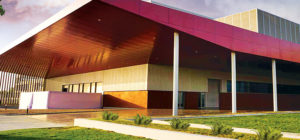
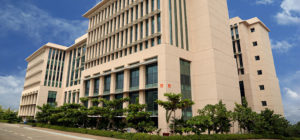
Adaptive, Sustainable Urban Façades
According to the United Nations, more than one half of world population now lives in urban areas. Urbanisation is increasing in all countries of the world. It is known that there is a clear link between urbanisation and environment. This is evident from the fact that cities have high demand for resources and have higher pollution levels compared to rural areas. So, it is important to ensure the new infrastructure, especially buildings are environmentally sustainable.Buildings account for one-third of global energy use, and significantly high carbon emissions. Considering the fact that a large fraction of buildings is going to be built in the coming years globally, it becomes imperative to follow sustainable building design strategies to minimise the environmental footprint. Buildings need to be designed in the right way from the concept stage to achieve high efficiency and minimal cost. Air conditioning accounts for nearly half of the energy consumption...
Posted on: 14 Feb 2019
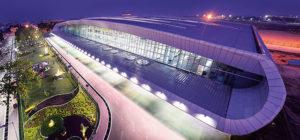
Cladding Choices
Over the years cladding industry has been going through a sea change. Along with a flood of innovative materials and designs introduced in the market, we see the advancement in technologies in application as well. As per a research report Grand View Research, Inc.’, the global cladding market is expected to reach USD 111.1 billion by 2025 and is projected to grow at a CAGR of 2.6 per cent from 2017 to 2025. The increasing construction spending and the development of more efficient building technologies using automated production and installation processes are expected to foster industry growth. Stringent green building regulations and codes such as the LEED certification, and growing demand for energy efficiency in project exteriors, especially for key construction industry participants, including architects and designers, are encouraging investments in lightweight and energy-efficient exterior panels in commercial as well as residential buildings. The choice of cladding has a significant...
Posted on: 12 Feb 2019
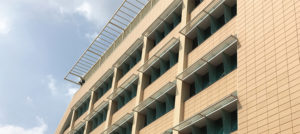
Passive Design Considerations in an Energy-Efficient Building
Buildings in India were traditionally built with a high thermal mass (brick, stone masonry) and used natural ventilation as their principal ventilation and cooling strategy. However, contemporary office buildings are energy-intensive and increasingly make use of steel, aluminium and glass as primary materials for construction. These resource-intensive materials, their processes and operations require a high level of fossil fuel use. According to UNEP, approximately 80 to 90 per cent of the energy a building uses during its entire life cycle is consumed for heating, cooling, lighting, and other appliances. The remaining 10 to 20 per cent is consumed during the construction, material manufacturing, and demolition phases (United Nations Environment Programme, 2010). It is therefore imperative to aggressively manage building energy efficiency and include a slew of (ECMs) as important metrics in the integrated whole-building design. These ECMs have to be planned during the design stage to achieve large, but relatively...
Posted on: 08 Mar 2018
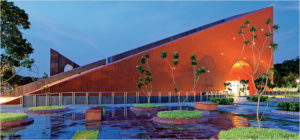
The Non-Façade Façade-Jai Prakash Narayan International Centre, Lucknow
Inserted as anchor points on one of the principal nodes of the city of Lucknow, the two institutions the Jayaprakash Narayan Interpretation Centre, also known as the Museum of Socialism, and the Jayaprakash Narayan International Convention Centre, take on the onus of becoming contemporary landmarks that inspire the development of the urban fabric around them. The museum’s architecture and experience design has not been envisioned to be mere repositories of frozen moments of the past, but designed with the intention of making it alive and active participant in the contemporary dynamics of the historic city of Lucknow.The external façade strives to achieve fitting, sensitive and gallant negotiations with the contrasting and oft conflicting contexts of urbanity and nature. The terracotta cladding responds to the integrity of a historic cityscape. The blank walls of the simplified triangle are born out of the need for the museum’s introverted character, but belie the...
Posted on: 12 Jan 2018
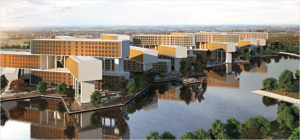
Vertically Stacked Modules – Infosys Campus MIHAN, Nagpur
Infosys Campus MIHAN is located in Nagpur, and sits in a ‘Special Economic Zone- SEZ’. Special Economic Zones are designated areas that possess special fiscal regulations different from the rest of the land with the aim of easing international trade and being conducive to foreign direct investment. The client brief was simply ‘to create the world’s most sustainable office building’. Morphogenesis took this opportunity to test if a development of this scale could be net zero on water, energy and waste to landfill, with a future aim to develop a model for sustainable master-planning for larger sites. The geology of the land played a key role in the morphological evolution; Nagpur lies in seismic zone II and the soil has a high bearing capacity. The building modules or tubes, are largely column free spaces that are stacked into a four floor format and are vertically connected through an atrium and...
Posted on: 11 Jan 2018
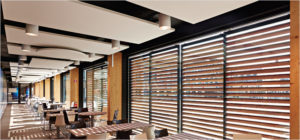
Everyone Deserves a Healthy Indoor Climate
Offices, schools, hospitals and rest homes are – just as homes – intended to provide people with a suitable working, learning and living environment. So it is very important to create a healthy indoor environment and minimise the energy needs of those buildings. Thermal, visual, and acoustic comfort and a supply of fresh air are the basic elements for a comfortable indoor environment. It goes without saying that sufficient fresh air is important. Just opening windows is not enough. You need continuous, controlled ventilation, but the main problem with full mechanical ventilation is the risk of contamination. Thermal comfort means that it is not too hot or not too cold - a pleasant temperature all year round. Of course, this is often subjective and sometimes calls for personal control. If you have large glass areas, particularly facing south, controlling the temperature in the summer is not always easy as there...
Posted on: 08 Jan 2018
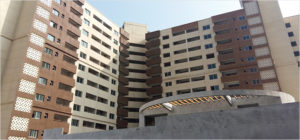
Upvc Doors and Windows–The Best Bet
uPVC windows & doors are the best bet for anyone who is ignorant about their doors and windows. It is environmentally friendly, rust and corrosion-resistant and hence has increased longevity as compared to others. The technology, design and testing process for the uPVC doors and windows helps to bring out their unique properties. [caption id="" align="alignright" width="382"] uPVC windows[/caption] As a tradition in India, we have seen that the doors and windows are done by a carpenter who is known to a family or through someone’s reference, and who primarily uses wood, mild steel or aluminium as frames over some glass and some basic hardware such as handles, shoot-bolts and hinges to create the structure. But the life span of those windows is very short. uPVC windows have many advantages, windows have come a long way from being insignificant to being recognized as the single most important area in a...
Posted on: 05 Jan 2018
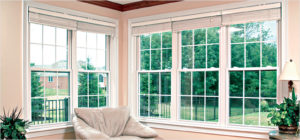
Evolution of Fenestration Industry in India
The Indian fenestration industry has undergone many changes in terms of engineering and material usage over the years. Wood windows have been in use since the birth of the building construction. Other building elements like steel and aluminium came much later, i.e., in the late 20th century, and only recently uPVC has been introduced in India. Let’s have a look at the evolution of the fenestration industry in India. The Era of Privatization The active growth of the Indian building/construction industry happened in the late 90s and early 2000s, when the IT complexes were sprawling across the country, starting from Bangalore to Hyderabad and Mumbai, Delhi and then Gurugram. Almost all the major real estate developers, such as DLF, Unitech, Hiranandani, Rahejas, Prestige and Brigade started paying attention to constructing state-of-the-art buildings, made using the latest technologies and designs available in the market at the time. Owing to the sudden...
Posted on: 11 Dec 2017
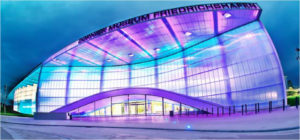
Key Aspects of Façade Material Selection
The building façade, also known as the building skin and/or building envelope, has become popular in recent times. It is, however, not always considered an important and necessary exterior element of a building with aesthetic and functional purposes. Historically, the facade has been just a concrete cover of façade material on the structure. Only in the last decade, architects and designers have started to think or consider about this aspect of the building and focus on sustainable material procurement. Façade is an independent frame made of Aluminium Composite Panel, double-glazed glass, pre-cast stone, natural stones or metal panels mounted and fixed in Galvanized Iron or on an Aluminium structure. The frame could be of a material alone or a combination of two materials. It is fixed with stainless steel components along with rubber gaskets, sealant, silicone gel, metal screws etc., on the beams. The architect/designers divide the face of the...
Posted on: 05 Oct 2017
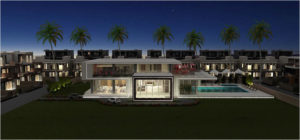
Façade Design Optimisation
It is a common saying that the first impression is the last impression. This is true in the case of architecture as well. And to create that perfect first impression, an architect needs to design a unique and striking façade. In architectural design, the façade of any building is a primary aspect from an aesthetic perspective as it defines the architectural language and character for the rest of the building. Moreover, from a pure engineering perspective, the façade is also of great importance due to its influence on energy efficiency and indoor comfort. The saying “Form follows function” is very common with architects, but in the contemporary style of designing, form of a building has become as important as its function. The competition amongst designers to create a landmark building has pushed humans to continuously try and develop new materials. With the ever-so-developing technology, a lot of ‘modern day materials’...
Posted on: 05 Oct 2017
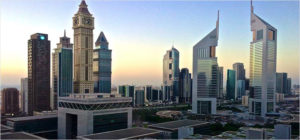
Advance Façades & Glazing Failures
‘A façade is a building’s primary exterior face. It generally includes the main entry to the building and has the most elaborate architectural features. As the most public face of a building, a façade is particularly important to your business. Studies have shown that thoughtful design improvements often lead to greater sales for a business by attracting more customers. Façade Types Looking at contemporary building envelopes (façades), it is obvious that various types of façade systems and materials have been innovatively and architecturally incorporated into buildings. As a majority, façade types mentioned in Figure 1 have been in practice in the sector. In this article, I will be highlighting the various types of glazed façade screen structures and the safety precautions to be considered in the design and engineering stage by architects, façade consultants and façade design engineers, especially considering façade safety and security aspects. Framed Façade Systems Framed systems...
Posted on: 04 Oct 2017

Fire Safety Compliance of Combustible Cladding
As per the data from the Council of Tall Buildings and Urban Habitat, 264 tall buildings (more than 100m) were built between 2006 and 2016 in the Middle East region. North America built 218, Europe built 113, Central America built 65, Oceania region 38 and South America built 32 tall buildings in the same period. The developers and architects in the Middle East region continue to challenge the engineers to build unique high rise buildings within their limitations of time and money. Adding to this is the unique climate and a passionate drive to be environment-friendly. Navigating this maze that leads to the topping out of buildings is easy if you are armed with the right knowledge and are aware of the tools available that help you distinguish between safe and unsafe. The shift from the traditional load-bearing wall construction method to the current method of building construction provides an...
Posted on: 04 Oct 2017
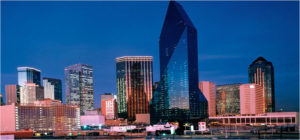
Our Silicone Technologies are Helping Shape the Indian Skyline
WFM: Tell us about your company, its products, and your business in India? Jean-Paul Hautekeer (JPH) : Dow Corning is a speciality chemical company, now a wholly owned subsidiary of The Dow Chemical Company, formed specifically to explore the potential of silicones, and their applications in various industries. We have more than 70 years of experience in the industry. Silicone is actually made from sand, which is transformed into poly crystal and silicon polymers, thereafter it is used in making different products. In the construction Industry, silicon is mainly used due to its durability and flexibility. Building components like glass on the facade are fixed using silicones due to these characters. Silicon will not deteriorate when exposed to sunshine, water, and any type of weather - hot or cold. Increasing urbanisation and rising need for energyefficient buildings (especially high-rises) are leading to growth in demand for silicone based materials. Applications containing...
Posted on: 03 Oct 2017
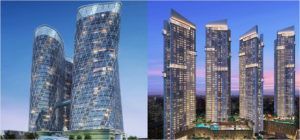
We Have Always Delivered Transformative Solutions That Use Space More Productively
WFM: Tell us about your design firm, your journey as an architect, and a few of your recently completed innovative and iconic projects? Yatin Patel : With a vision to establish a multi-faceted design consultancy firm and to extend its services pan India, I co-founded DSP Design Associates with Mehul Shah and Bimal Desai, two prominent visionaries in the architectural industry. DSP Design Associates credit their goodwill to a healthy clientele, having designed over 200 million Sq ft spread across over 1000 projects. The crux of the business success comes from a research driven, highly scientific approach to projects, irrespective of the scale and scope of the project. Every project is assigned a well thought, sui generis treatment in terms of strategy, vendor recruitment, execution and quality control. In addition to commercial and residential real estate, the organization also services verticals like hospitality and industrial architecture. DSP Design commands expertise...
Posted on: 08 Sep 2017
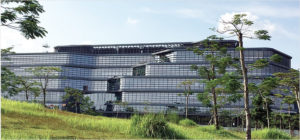
Dynamic Forms & Patterns Unilever Headquarters, Jakarta, Indonesia
With the advent of digital design documentation, the last decade has witnessed a significant departure from patterned linear geometries to more irregular and abstract building forms. Since the building façade is manufactured, and manufacturing efficiency governs the time frame and cost of the building, the key to successful implementation lies in the review and optimization of the building design to achieve a cost-effective solution while mitigating large adverse impacts on the building aesthetics that the designer and the owner have committed to. [caption id="" align="alignnone" width="774"] Unilever Indonesia Headquarters, Jakarta. ©Henry N.[/caption] In 2014, Unilever Indonesia envisioned to consolidate their operations across Jakarta into a single building owned and operated by them. Inhabit was approached to provide façade and BMU Engineering, lighting design, green building consultancy and acoustic/audio-visual design consultancy services. The services were delivered seamlessly by Inhabit’s specialist teams based in Melbourne, Hong Kong, Singapore and Dubai. The building’s...
Posted on: 29 Aug 2017

